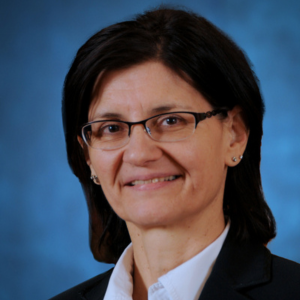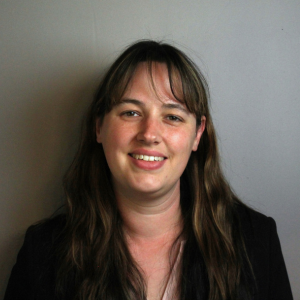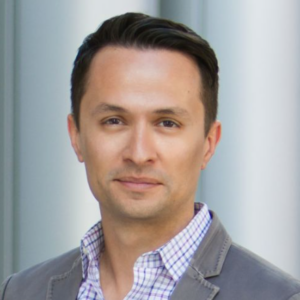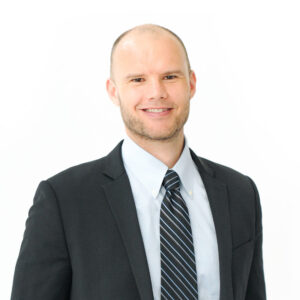How Technology Can Improve Senior Care Staff Satisfaction
Taking on a paramount role in the senior care industry, technology is often portrayed as helping communities deliver enhanced quality of care. While technology can benefit residents in many ways, its ability to support staff members can contribute to increased satisfaction, improved morale, and retention, qualities that are highly valuable given the staffing challenges the industry faces. Read on to learn the many ways senior care communities use technology, contributing to overall staff satisfaction and engagement.
Digital Care Management

Moti Gamburd, CEO of Raya’s Paradise
Moti Gamburd, CEO of Raya’s Paradise, explains that the community introduced a digital care management system that simplifies daily tasks, such as scheduling and resident care tracking. An app simplifies the process of checking resident preferences and health updates, so staff members no longer have to use paper records.
“Staff often say how much simpler it is to stay organized now,” he explains. They have expressed feeling less rushed and more confident in their ability to provide care, and they have more time to engage with residents and develop meaningful personal interactions. “We’ve seen better teamwork and fewer miscommunications, and that’s made a noticeable difference in morale,” Gamburd says. “When employees feel supported, they bring that positivity to their work.”
Gamburd notes that employees have noticed the new technology reduces their stress and makes their work more manageable. “They feel appreciated and equipped to do their jobs well, which makes them want to stay. We’ve seen lower turnover and a stronger sense of teamwork, which tells me we’re on the right track,” he says.
AI Patient Monitoring and Scheduling

Dr. Ahzam Afzal, CEO and co-founder of Puzzle Healthcare
Dr. Ahzam Afzal, CEO and co-founder of Puzzle Healthcare, explains that the company and its partners use an AI-based scheduling tool to predict staff availability and anticipate patient needs. The technology helps ensure the facility is fully equipped to provide quality resident care, helping staff be more efficient. It also helps reduce the stress and burnout that randomized scheduling can cause.
“Our scheduling tools have learned our staff’s patterns over time, understanding who works what shifts frequently and what days individuals prefer resulting in optimal scheduling that makes everyone happy,” explains Afzal. “When employees are scheduled for shifts they prefer, the work completed is of higher quality and much more efficient, allowing patients to experience better outcomes.”
The patient monitoring technology benefits not only patients, but also staff. It uses data such as age, current conditions, and chronic illnesses to flag patients who are most at risk for hospital readmission. Staff can then prioritize patients’ needs to prevent health declines. Staff members can get a full picture of an individual’s medical history, which helps reduce errors. The technology also allows staff to communicate with each other and to connect with outside providers and physicians.
Afzal says the patient flagging and reporting systems have streamlined prioritizing care, reduced guesswork, and have allowed staff to effectively focus on high-risk patients. “Employees report feeling more confident in their clinical decisions, knowing they have comprehensive data to rely on,” he says. “This improvement in workflow efficiency has translated into better performance, higher-quality care, and less stress, all contributing to stronger retention and satisfaction.”
Technology Solutions to Staff Pain Points

Dusanka Delovska-Trajkova, CIO and Technology Manager at Ingleside
The community at Ingleside has identified and implemented technology to address common staff concerns and challenges. “We frequently ask our employees for input about pain points during their workday,” says Dusanka Delovska-Trajkova, CIO and technology manager at Ingleside. “During these conversations, we unveil the core issue and try to find a technology that may solve the problem together.”
This may involve mapping out current processes, identifying gaps and repetitive or manual processes, and seeking out automated solutions. “We love pilots where we implement a technology solution and then evaluate the results by collecting data or interviewing direct users,” says Delovska-Trajkova.
One such pilot involved improving the community’s dining reservation system. The community worked with the dining employees and the dining services software vendor to make changes to the software while also assessing how residents use the system to order food, make reservations, or check their dining accounts. “The changes improved not only the staff satisfaction but also the resident satisfaction because it improved their dining experience,” she explains.
For the last six years, Ingleside has also partnered with students from the Human Computer Interaction Department at the Indiana University School for Informatics. Students perform studies of the technology used in the community and work to improve its usability and user-friendliness. Students discuss the technology with employees and residents during online or in-person focus groups, and then present suggestions on what to improve or adjust. Ingleside received bronze in the 2024 McKnight’s Technology Award for this effort.
When Ingleside implemented dining robots to further support dining staff, the staff needed additional training in order to fully understand how the robots work and identify what to do when the robots get confused. To do this, the onboarding process was improved and daily huddles before shifts included brief reminders about the robots. Though technology implementation isn’t always seamless, staff members could see that their concerns were heard and work was being done to improve their experience.
Best Practices for Implementing Technology to Support Staff
Delovska-Trajkova highlights the importance of including employees early on in the process to encourage buy-in. “Help them understand why we need to change and allow them to contribute to process improvement and technology selection,” she recommends. Since everyone learns differently, it’s essential to provide early and repetitive education in different ways to support the adoption of the technology. “Assess the implemented technology frequently and be ready to adjust,” she says. “Change takes time, so patience is needed and appreciated.”
“Digital tools are meant to help, not to completely solve every problem and should not make things harder,” cautions Afzal. He notes that healthcare leaders must understand the problem and the issue they’re trying to solve while ensuring the technology delivers a clear return on investment.
Implementing new technology can be difficult at first, especially since individuals learn at different speeds, and adapting to change is never an easy process. “Offering tutorials and office hours for additional questions can be extremely valuable in the first few days of this process, especially to ensure that staff will work effectively with the technology,” Afzal explains. “Eventually, leaders will be able to look back at their ROI and recognize that the hurdles of implementation were all worth it.”

Paige Cerulli is a contributing writer to i Advance Senior Care.
Related Articles
Topics: Facility management , Featured Articles , General Technology , Information Technology , Operations , Risk Management , Staffing , Technology & IT











